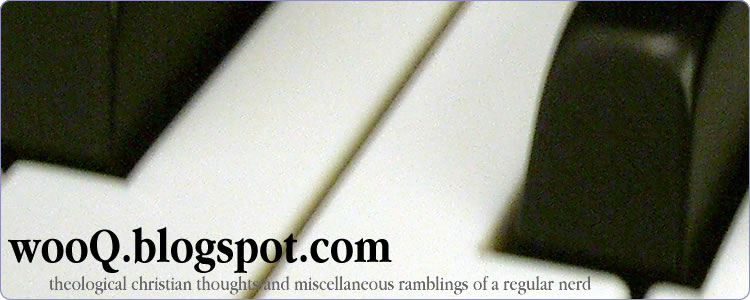Forced Baptisms by the Roman Catholic Church
 The following quotations taken from the book "The Popes Against the Jews" depict how the Roman Catholic Church used the sacrament of baptism to force the Jews into acknowledging its false gospel. It is clear from these historical accounts, as well as its false doctrines, that the god of the Roman Catholic Church is not the God of the Bible. Neither is the "Jesus" of Roman Catholicism the same Jesus Christ of the Word of God.
The following quotations taken from the book "The Popes Against the Jews" depict how the Roman Catholic Church used the sacrament of baptism to force the Jews into acknowledging its false gospel. It is clear from these historical accounts, as well as its false doctrines, that the god of the Roman Catholic Church is not the God of the Bible. Neither is the "Jesus" of Roman Catholicism the same Jesus Christ of the Word of God.
p. 49-50 The case of Maddalena, the Catholic widow who surreptitiously baptized the infant in the ghetto, reflects a practice that had gone on for centuries, and had produced an unending stream of protests from the Jews. Rather than dying out in the nineteenth century, these forced baptisms continued. In responding to the anguished pleas for mercy coming from parents whose babies had been taken by papal police, Vatican officials stuck to the same position that the popes had embraced for centuries: Christians should not go around secretly baptizing Jewish children against their parents' will. Yet a baptism, once performed, was valid, even in cases where it was illicit. The Holy Spirit had entered the child, and in the act of baptism the child's soul was regenerated by Christ's spirit. Such an act of God could not be undone by mere humans. That child was now a Catholic and could not be raised by Jewish parents, for they would undermine that holy transformation. In practice, this meant that whenever Church authorities were informed about such a baptism, they ordered the local police to remove the child from the parents' home and send it to the House of the Catechumens (whether in Rome or in the city where the parents and child lived).
p. 53 Having been called that very morning to the hospital, he wrote, he had been directed to the bed of a dying Jew. The chaplain beseeched the man to embrace the holy faith. "Sabato," he said, "the Messiah, the Savior of the People of Israel, has sent me to you; He does not want you to wait any longer, because He has come, and He wants you to be baptized, and to become a Christian." The chaplain then asked: "If you want to be baptized, and to become a Christian, give me a sign, close your eyes" - and here the chaplain wrote in parentheses, "he had them wide open" - "and grip my hand." And, lo and behold, the chaplain went on, the dying man did give him two signs, closing his eyes and holding his hand more firmly, so he baptized him. It turned out to be just in time. Within minutes of receiving the baptismal rites, Sabato died.
For the Church, the case was clear: the old man died a Catholic, having been validly and properly baptized, and thereby narrowly avoiding eternal damnation. It was an event to be celebrated. His body could not be returned to the Jews.
p. 54 Nowhere was the force used by the Church against the Jews in this period clearer than in such cases as these. In the three and a half years from the middle of 1814 through 1818, Church authorities sent the police into the Roman ghetto on twenty-two different occasions, always at night, to extract Jews by force and take them to the House of the Catechumens. In that brief period alone, the police took seventeen married women, three fiancées, and twenty-seven children. The night hours were a time of fear for Rome's Jews.
p. 59 The feeling of dread that hung over the ghetto in the years after the Pope's return to power in Rome, produced by the frequent nocturnal visits of the police and the seizure of women and children, continued for as long as did the Papal States. But the first years of restoration of the papal regime were the worst for the Jews in this respect, despite the fact that, as we will see, Pius VII's successors in other ways made Pius look magnanimous in his treatment of the Jews. In the four and a half years from mid-1814 - when the House of the Catechumens was reestablished - to the end of 1818, sixty women and children were extracted by force from Rome's ghetto and confined to the House of the Catechumens. Some of them came back, but for the children it was a one-way trip.
 The following quotations taken from the book "The Popes Against the Jews" depict how the Roman Catholic Church used the sacrament of baptism to force the Jews into acknowledging its false gospel. It is clear from these historical accounts, as well as its false doctrines, that the god of the Roman Catholic Church is not the God of the Bible. Neither is the "Jesus" of Roman Catholicism the same Jesus Christ of the Word of God.
The following quotations taken from the book "The Popes Against the Jews" depict how the Roman Catholic Church used the sacrament of baptism to force the Jews into acknowledging its false gospel. It is clear from these historical accounts, as well as its false doctrines, that the god of the Roman Catholic Church is not the God of the Bible. Neither is the "Jesus" of Roman Catholicism the same Jesus Christ of the Word of God.






0 Comments:
Post a Comment
<< Home